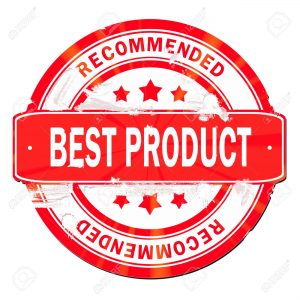How to clean polish pads
Written by: Vinnie van Rooij
Polishing pads can get very dirty. After use they contain polish residue, oils, very small paint particles, possibly dirt and mineral deposits. Cleaning polish pads properly prepares them for use the next time and prolongs their life.
Contents
The dirt in them
Polish pads, when used, can contain unwanted particles. These particles are parts of the products you used and parts of the surface you have been working on. In general, they would be something like:
- Oils from the polish
- abrasive residue, from the polish
- Mineral deposits, that came from the vehicles surface
- Paint particles, you removed these by polishing
- Dirt or grime, if the surface wasn’t cleaned good enough
- General residue, from the polish or perhaps another product you where using
- Particles of the old protective layer, these are removed by polishing
Some of these are very easy to remove, because the material that the polish pad is made from doesn’t allow it to stick to the material. However, some discoloring can happen, which is often irreversible. This usually does not have any negative effect on the quality of the pad or the effectiveness.
Cleaning the polish pads
When cleaning the polish pad, this can be done be preparing, soaking and/or rinsing. There are certain products that do just this, they keep the pads soft and loosen up the polish residue.
Preparing
This means you spray or rinse the pad directly after use, to remove any loose product and prevent them from drying up. This can also be done by spraying them with APC after use and keep them in a closed plastic bag. This will prevent the dirt from drying up. This is not aimed at cleaning them right now, but at making cleaning easier at a later stage.
Soaking
By soaking, you loosen up the particles in them to allow for easier cleaning later on. This can be done by the tip describe above (at Preparing), or by letting them soak in water with a cleaning solution. If you are at home this can be done fairly easily by filling the sink with lukewarm water and adding a bit of dishwashing-liquid. This soap contains a lot of citric acid, which will help a lot with removing the polish oils and residue. Don’t use to hot water, because this can soften the glue for the velcro backing. Once that glue has been softened, the backing with peel off when you try to remove it from the backingplate. For this reason it is always recommended to put the pads face down in the water.
Cleaning
After they have soaked for a while, the cleaning will be fairly easy. Take the pad out of water, spray some dishwashing-liquid over it, and massage it in. You’ll notice that most of the polish residue will already come out. Keep massaging and then put the pad back in the water. There are also dedicated pad cleaning products on the market. These come in powder- or liquid form.
Rinsing
By rinsing you actually remove the unwanted particles from the pad and dispose of them. Open the faucet to get some running lukewarm water, massage the polish residue out of the polishing pad. If there is still a lot of residue, you can add some dishwashing-liquid, massage it in and rinse it out. Keep rinsing till the water is clear and clean with no suds.
Drying
After you have rinsed the pads, they are soaking wet, and it will take a long time to dry them. There are 2 techniques that have proven to be the safest option.
Option 1: get yourself a piece of very sturdy cardboard, fold it in half (don’t cut it). Put the polishing pad in the fold and by folding the cardboard you squeeze the water out of the pad. After this has been done, put them on a warm place (like a radiator) and leave them to dry.
Option 2: stack several pads on top of out each other, and use a firm, flat object to flatten them. This will squeeze most of the water out.
Other methods and their risks
There are several ways of cleaning pads, some are more risky then others.
- Fold the pad, and just squeeze really firm with your hand to dry the pad. This can stretch the pad and make it loose its shape. Which will result in unbalanced pads
- Spray them with heavy cleaning stuff. This could actually damage the pad, remove to little residue and/or loosing up the glue for the velcro backing
- Steam the residue off. This can literally damage the pad itself, in extreme cases it can even burn/melt through them
- Dry them by spinning them on a rotary. This puts a lot of pressure on the edges, because they spin much harder then the center. The edges can tear and the pad can loose its shape
- Although APC is good at cleaning off polish residue from a polished surface, its not strong enough to remove the residue from a used polishing pad
- Just leave them to dry in the sun, and then beat the residue out. This won’t remove all of the residue, and some might dry into the fabric and be very difficult to remove in the future
- A pad washer. This is great bit of kit on the fly, but not good enough to clean your pads for storage. It also gives the risk of deforming the pads when rotating at to high speed
- Putting them in the washing machine. It is an easy way, but doesn’t remove all of the residue and some washing liquids leave behind small amounts of residue
- Using a brush or cleaning wheel. This works good when you need to clean it good enough to continue polishing, but it doesn’t remove all of the residue
- Hose them off with the pressure washer. The pressure can actually damage the pads and deform them, when it doesn’t even remove all of the residue
- Dry them in a tumble dryer. This works, but the temperature can deform the pads and sometimes even damage the cell structure
- Just leave them and reuse them without cleaning. The residue that hsa dried up can form very hard lumps. They can cause serious surface imperfections when using. It will also prevent the pad from absorbing a bit of polish to make spreading even easier
- Using fabric softener after cleaning. This can leave an oily residue on the cells, which will actually prevent it from absorbing any water. Cleaning the pad will become much more difficult and polish won’t be spread evenly as easily as it should do. There is also the possibility of spreading that oily residue over the surface you are polishing
- Cleaning with nothing more then IPA. Same as with APC, it isn’t strong enough to fully clean away all of the residue. However, it will help in pre-soaking the pads to make cleaning easier
 After washing a vehicle, the recommended step is to rinse the soap off. But not everybody actually knows why its recommended. Why not just dry off the soap and with it, the vehicle? Rinsing is one of the many steps of washing a car properly. And shouldn't be skipped, unless you are using a rinseless of waterless washing products....
After washing a vehicle, the recommended step is to rinse the soap off. But not everybody actually knows why its recommended. Why not just dry off the soap and with it, the vehicle? Rinsing is one of the many steps of washing a car properly. And shouldn't be skipped, unless you are using a rinseless of waterless washing products.... It is often asked on detailing fora and social media: "what is the best leather protector". Off course there is a difference between certain products and brands, but it is important to know what you are asking. In this guide I will try to explain what the problem is with this question unless it is asked more in-depth....
It is often asked on detailing fora and social media: "what is the best leather protector". Off course there is a difference between certain products and brands, but it is important to know what you are asking. In this guide I will try to explain what the problem is with this question unless it is asked more in-depth.... Westhill Trading Ltd is an English manufacturer of products used in detailing and valeting. Among others, Westhill Trading is the company behind Colourlock, known for cleaning, restoring and coloring leather surfaces. The company used to be called Westhill Properties Ltd up until Februari 2015....
Westhill Trading Ltd is an English manufacturer of products used in detailing and valeting. Among others, Westhill Trading is the company behind Colourlock, known for cleaning, restoring and coloring leather surfaces. The company used to be called Westhill Properties Ltd up until Februari 2015.... Finish Kare is a detailing products manufacturer that started out creating mold release products. The step into car wax for protective purposes was a small change that was easy enough to make. The brand now offers a small range of cleaning, polishing, protecting and perfecting surfaces for both car and marine detailing....
Finish Kare is a detailing products manufacturer that started out creating mold release products. The step into car wax for protective purposes was a small change that was easy enough to make. The brand now offers a small range of cleaning, polishing, protecting and perfecting surfaces for both car and marine detailing.... There are reasons why paintwork can turn dull. Oxidized paintwork, or UV-damaged paintwork. Oxidized paintwork can look dull and looses its shine. It doesn't turn pale or looses its color, this would be UV-damage, not oxidation....
There are reasons why paintwork can turn dull. Oxidized paintwork, or UV-damaged paintwork. Oxidized paintwork can look dull and looses its shine. It doesn't turn pale or looses its color, this would be UV-damage, not oxidation.... A surface imperfection is an unwanted difference in depth, height or structure to the surrounding area. For example: a scratch, which is basically a sudden difference in depth with an edge that has an angle that is very different to the one of the surrounding area....
A surface imperfection is an unwanted difference in depth, height or structure to the surrounding area. For example: a scratch, which is basically a sudden difference in depth with an edge that has an angle that is very different to the one of the surrounding area....







Links to this article
There are no external links to this article. Yet.